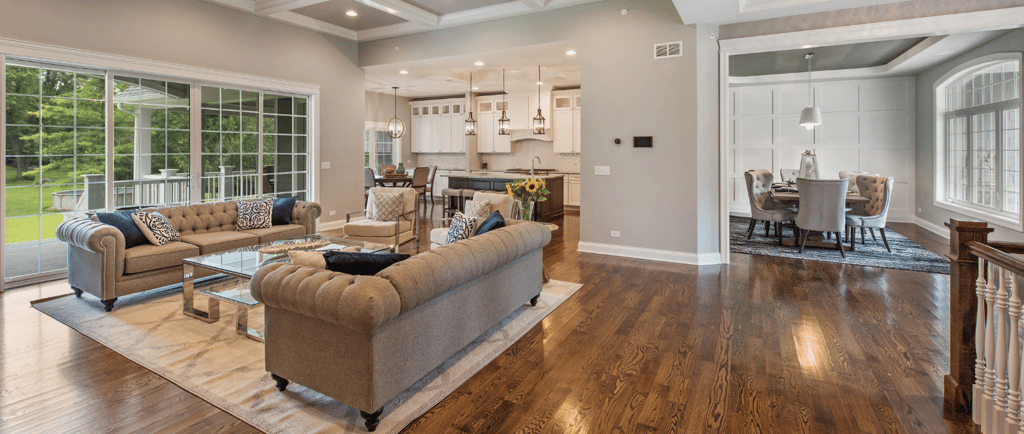Keep Hardwood Floors Scratch-Free: Simple Tips
Discover practical and effective strategies to keep your hardwood floors looking flawless in our latest blog post. From choosing the right furniture pads to managing pet claws and maintaining optimal humidity levels, we cover all the essential tips to prevent scratches and preserve the natural beauty of your floors. Whether you're a seasoned homeowner or new to hardwood, these simple yet powerful tips will help you protect your investment and enjoy scratch-free floors for years to come. Dive in and learn how to maintain your hardwood floors with ease!
8/15/20243 min read


Introduction: The Charm of Hardwood Floors
Hardwood floors are a hallmark of elegance, their rich textures and natural beauty adding warmth and sophistication to any home. However, maintaining their pristine condition can be challenging, especially when it comes to preventing unsightly scratches. Understanding how to protect your hardwood floors not only preserves their aesthetic appeal but also prolongs their lifespan, ensuring they remain a treasured feature of your home for years to come.
Understanding Common Causes of Scratches
Scratches on hardwood floors often arise from everyday activities that go unnoticed. Moving furniture, for instance, can easily gouge or scrape the wood, especially if it’s done without protective measures. Similarly, heavy foot traffic, particularly in households with children or pets, can wear down the finish and expose the wood to damage. Understanding these common causes is the first step toward implementing effective preventive strategies.
Choosing the Right Furniture Pads
One of the simplest yet most effective ways to prevent scratches is by using furniture pads. These pads act as a buffer between your furniture and the floor, reducing the risk of damage when pieces are moved. Options range from felt pads, which are ideal for lightweight furniture, to rubber pads that provide extra grip for heavier items. To ensure maximum protection, it’s important to check and replace these pads regularly, as worn-out pads can lose their effectiveness over time.
Regular Cleaning: A Key Preventive Measure
Regular cleaning is crucial in maintaining scratch-free hardwood floors. Dust, dirt, and debris act like sandpaper underfoot, gradually wearing down the protective finish of the wood. A daily routine of sweeping with a soft-bristle broom and mopping with a damp (not wet) mop can go a long way in preventing scratches. Choosing the right cleaning products is equally important; harsh chemicals can strip the wood’s finish, so opt for cleaners specifically designed for hardwood floors.
Using Rugs and Runners Effectively
Rugs and runners are not just decorative elements; they are practical tools in the fight against floor scratches. Placing them in high-traffic areas, such as hallways and entryways, can significantly reduce wear and tear. When selecting rugs, it’s vital to choose those with a soft backing that won’t scratch the floor. Additionally, using a non-slip rug pad underneath can prevent the rug from sliding and causing friction against the wood.
Managing Pet Nails and Claws
Pets, especially dogs and cats, can inadvertently cause scratches on hardwood floors with their nails. Regular grooming, including trimming and smoothing your pet’s nails, can minimize the risk of damage. For additional protection, consider using pet-friendly floor covers in areas where your pets spend most of their time. These covers provide a barrier between your pet’s claws and the hardwood, reducing the likelihood of scratches.
Wearing the Right Footwear Indoors
The type of footwear you wear indoors can have a significant impact on your hardwood floors. High heels and heavy boots, for example, can create deep dents and scratches due to their hard soles and concentrated pressure. To keep your floors in top condition, it’s best to wear soft-soled shoes or go barefoot indoors. Encouraging guests to remove their shoes at the door can also help in maintaining a scratch-free environment.
Maintaining Optimal Humidity Levels
Humidity plays a crucial role in the health of your hardwood floors. Excess moisture can cause the wood to expand, while dry conditions can lead to contraction and cracks, both of which make the floor more susceptible to scratches. Using a humidifier in dry seasons and a dehumidifier during humid periods can help maintain a stable environment. Investing in a hygrometer to monitor indoor humidity levels ensures that your floors remain in their optimal condition.
Quick Fixes for Minor Scratches
Despite your best efforts, minor scratches may still occur. Fortunately, there are several quick fixes you can try before calling in a professional. For shallow scratches, a wood stain marker can often mask the damage effectively. Deeper scratches might require more attention, such as using a wood filler or wax stick to fill in the gouge. However, if the scratch is extensive, it may be best to consult a professional to avoid further damage.
Long-Term Maintenance Strategies
Long-term maintenance is key to keeping hardwood floors looking their best. Regular deep cleaning and polishing can rejuvenate the wood’s surface, while professional inspections can catch potential issues before they become major problems. Scheduling these maintenance tasks at least once a year will help preserve the integrity and beauty of your hardwood floors, ensuring they continue to shine for years to come.


(609) 806 - 5565
help@freshlivingpc.com
Follow us on
